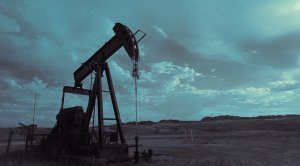 If they’re wise enough to rethink their plan, they should instead develop one that reduces GHG emissions without killing the western golden goose, writes Jack Mintz in the Financial Post. Below is an excerpt from the article, which can be read in full here.
If they’re wise enough to rethink their plan, they should instead develop one that reduces GHG emissions without killing the western golden goose, writes Jack Mintz in the Financial Post. Below is an excerpt from the article, which can be read in full here.
By Jack Mintz, September 14, 2020
With the new session of Parliament quickly coming up, political watchers are busily speculating about the Liberal government’s spending spree and climate plan. The government’s new agenda is expected to include at least $50 billion in climate spending and subsidies over five years.
The bigger question is whether the federal government will pursue much tougher regulations that will particularly impact on transportation and oil and gas sectors. These two economic sectors made up 52 per cent of Canada’s GHG emissions in 2018. Canada’s emissions have been virtually flat at 720 megatonnes (MT) since 2005, so any chance of reaching a 30-per-cent reduction in emissions by 2030, as the Liberals have promised to do, looks highly unrealistic without heavily affecting these two sectors.
As John Ivison reported in Friday’s National Post, the Liberal government may adopt even tougher targets pursuing stronger measures not currently in use. The most important would be the Clean Fuel Standard (CFS), which features an equivalent carbon tax of $350 per tonne. This regulation would be on top of the $50-per-tonne carbon tax that is typically touted as the best economic approach to achieving climate objectives (a position that I agree with). The CFS would substantially increase heating and transportation costs for households and businesses, while applying a much lighter touch to other emissions, such as those from the cement and aluminum industry. One goal is to push consumers into buying electric vehicles, which so far remain at less than five per cent of auto sales. People still prefer SUVs, and SUVs are where Ontario automakers make their best margins.Despite the bafflegab put out by certain anti-fossil-fuel activists and politicians, green jobs don’t generate anywhere close to the value added per working hour produced currently in oil, gas, petrochemical and mining industries. So, any policy that particularly penalizes these industries will certainly undermine economic growth, just as the economy is already facing several years of difficulties as we recover from the current pandemic.
This economic cost would be felt most heavily in the Western provinces especially Alberta and Saskatchewan. The Buffalo region (as these two provinces could have been called, when a united province of the two was proposed in 1905) is decidedly unhappy with federal policies. Both provinces contribute over $20 billion per year, equivalent to a 10-per-cent tax on their personal income, in fiscal transfers to the rest of Canada through the federal budget. Even though federal spending is far greater than taxes in these provinces for 2020, that has to do with the huge federal deficit, which is just deferred taxes, anyway. Alberta and Saskatchewan will likely continue their outsized contribution to the rest of Canada when the bill for current spending comes due.




